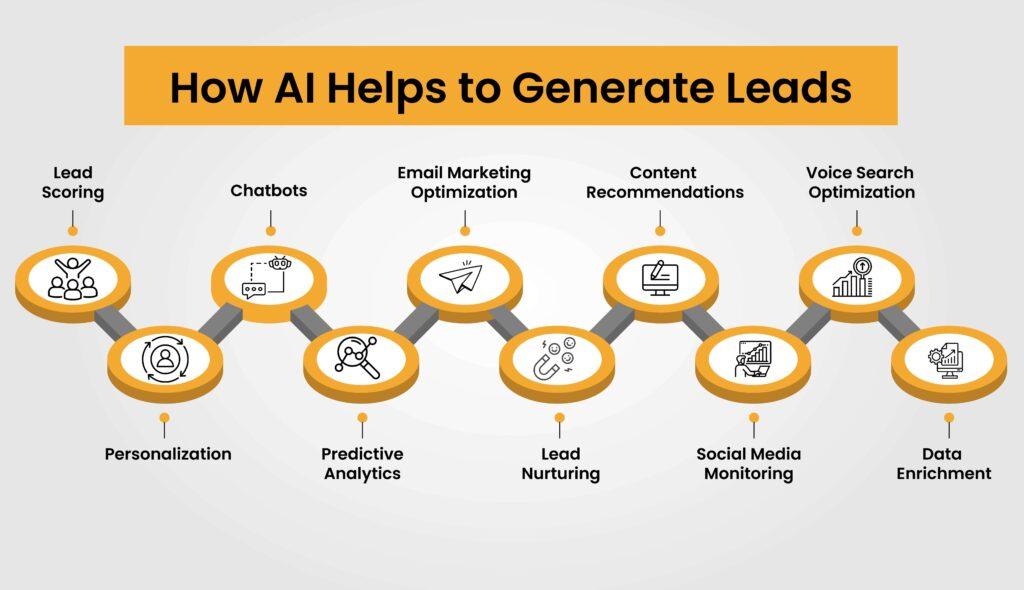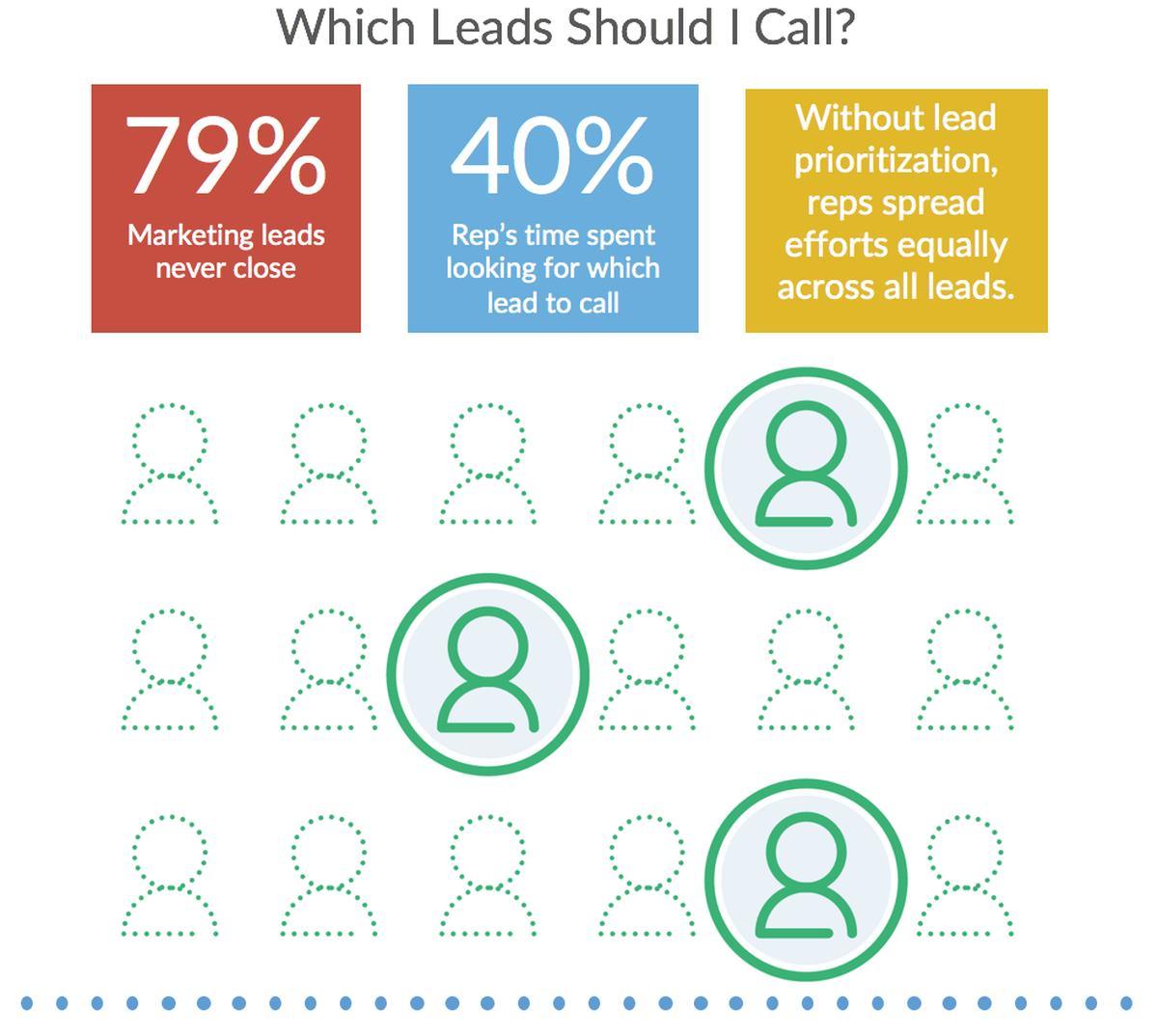In today’s fiercely competitive tech landscape, where innovation is a constant and customer attention is fleeting, companies are on a relentless quest to refine their sales strategies. Enter the game-changing power of artificial intelligence—specifically, AI-powered lead scoring. This complex approach transcends traditional methods by harnessing vast amounts of data to prioritize leads with unprecedented accuracy. Imagine a world where sales teams can confidently focus their efforts on the prospects most likely to convert, ultimately streamlining workflows and enhancing revenue potential. In this article, we’ll explore how AI-driven lead scoring is transforming the way tech companies identify, engage, and nurture their leads, unlocking new pathways to growth in an ever-evolving marketplace.
Revolutionizing Client Acquisition Through AI Lead Scoring
as tech companies continue to grapple with the ever-increasing competition in the digital marketplace, traditional methods of client acquisition are becoming less effective. Enter AI lead scoring—a revolutionary approach that uses predictive analytics to identify and prioritize leads based on their likelihood to convert. By leveraging detailed algorithms and machine learning models, tech companies can gain deep insights into their potential clients’ behaviors, preferences, and needs. This allows sales teams to focus their efforts on leads that are more likely to yield high returns, significantly enhancing efficiency and productivity.
A well-executed AI lead scoring system not only optimizes the client acquisition process but also provides a more personalized experience for prospective customers. Here are some advantages of utilizing this innovative approach:
- Enhanced Accuracy: Machine learning algorithms analyze multiple data points to ensure a more accurate lead assessment.
- Resource Optimization: Sales teams can allocate their time and budget more effectively by zeroing in on high-value leads.
- Data-driven Insights: In-depth analytics offer actionable insights that can inform marketing strategies and product offerings.
- Continuous Improvement: The AI system improves over time, adapting to changing market conditions and client behaviors.

understanding the Algorithms Behind Effective lead Prioritization
The effectiveness of lead prioritization is underpinned by complex algorithms that leverage data to enhance decision-making. These algorithms analyze various factors, including a lead’s engagement level, demographic information, and ancient behavior. By employing machine learning techniques, they learn from past interactions to identify patterns that signify a higher likelihood of conversion. Some of the key features utilized in these algorithms include:
- Engagement metrics: Tracking email opens, website visits, and social media interactions.
- Demographic information: Assessing the relevance of leads based on company size, industry, and location.
- Behavioral signals: Analyzing previous purchase patterns or product interests.
To present this information efficiently, tables can summarize and compare scores assigned to different leads based on these features. WordPress can enhance the display of this data, making it easy for teams to visualize lead potential. for instance, a lead scoring table could look like this:
| Lead Name | Engagement Score | Demographic Score | Total Score |
|---|---|---|---|
| Lead A | 85 | 70 | 155 |
| Lead B | 60 | 80 | 140 |
| Lead C | 90 | 60 | 150 |
This structured approach not only simplifies the decision-making process but also ensures that sales teams focus their efforts on leads that are most likely to convert, optimizing time and resources in a data-driven manner.

Maximizing ROI with Targeted Engagement Strategies
in the competitive landscape of tech companies, leveraging AI-powered lead scoring can significantly enhance targeted engagement strategies. By analyzing a multitude of data points—from past interactions to socio-demographic details—AI enables businesses to identify and prioritize leads with the highest potential for conversion. This not only streamlines the sales process but also allows marketing teams to tailor their campaigns more effectively. Key benefits include:
- Improved Lead Quality: Focus resources on leads that are most likely to convert.
- Personalized Engagement: Create tailored messages based on lead behavior.
- Enhanced Efficiency: Allocate sales efforts more wisely,increasing overall productivity.
Furthermore, implementing a system that integrates seamlessly with your existing CRM ensures a continuous feedback loop, further refining your scoring model based on closed deals and customer lifetime values. Regularly updated algorithms help maintain the accuracy of lead assessments, and organizations may consider conducting an in-depth analysis to better understand buyer personas and their distinct needs. Here’s a simplified view of how lead scoring can be structured:
| Score Range | Lead Status | Recommended Action |
|---|---|---|
| 0 – 30 | Cold | send nurturing emails |
| 31 - 70 | Warm | Engagement campaign |
| 71 - 100 | Hot | Immediate follow-up |

Implementing AI Solutions: A Step-by-Step Guide for Tech Enterprises
Incorporating AI-powered lead scoring into your tech enterprise can transform your sales strategy, enhancing productivity and efficiency. Start by assessing your data sources—this includes CRM systems, website analytics, and social media insights. By determining which data points are most relevant to your leads, you can create a solid foundation for your AI model. Then, consider the following key elements:
- Data Cleaning: Ensure that your data is accurate and free from duplicates.
- Feature Selection: Identify the most predictive variables,such as user behavior and demographics.
- Model Selection: Choose between algorithms like logistic regression, decision trees, or neural networks based on your specific needs.
Once you’ve established a framework, it’s crucial to implement and continuously refine your AI model. Training your model with historical data will help it learn from past lead interactions, subsequently improving it’s scoring accuracy. Consider creating a feedback loop for ongoing improvement by analyzing post-conversion data to adjust scores and refine lead definitions. A simple overview of this process can be depicted as follows:
| Process Stage | Action |
|---|---|
| Data Assessment | Identify relevant data sources |
| Model Growth | Select features and algorithms |
| Model training | train with historical data |
| feedback Loop | Analyze and refine the scoring model |
Closing Remarks
As technology continues to evolve, so too must our strategies for navigating the competitive landscape of the tech industry. AI-powered lead scoring emerges as a beacon of efficiency and precision, illuminating the path toward effective sales and marketing alignment. By leveraging data-driven insights, tech companies can not only streamline their lead qualification processes but also foster deeper relationships with potential customers.
In a world where time is money and innovation is paramount, embracing AI-driven solutions is not merely an option—it’s a necessity for those looking to gain a competitive edge. As we close this exploration of AI-powered lead scoring,we invite you to envision a future where technology and human ingenuity collaborate seamlessly,empowering your business to connect with the right leads at the right time. The dawn of smarter lead scoring is upon us,and with it comes the promise of greater success in the ever-evolving tech landscape. So, are you ready to harness the power of AI and transform your lead management strategy? The choice is yours.


